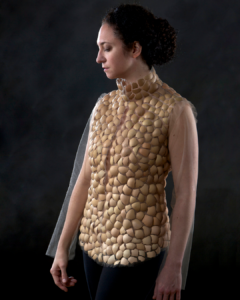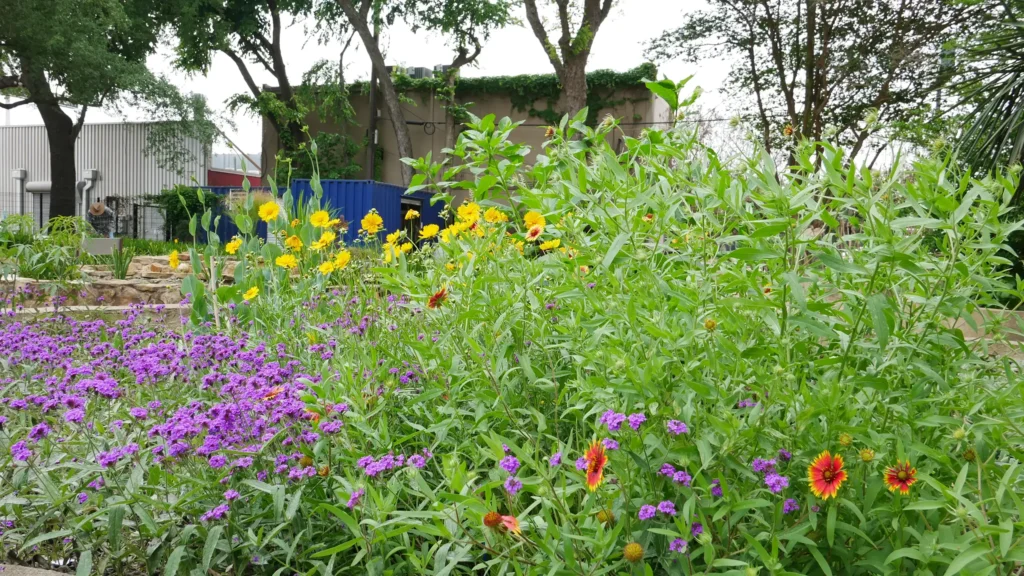Glassblower Andy Paiko grinned mischievously the other day as he slowly swabbed a rag inside a clear glass vessel the size of a punch bowl, shining it but also creating a sound akin to a low C note on a musical scale.
Sound artist Ethan Rose, Paiko’s collaborator, fiddled with the mechanics of boxes mounted like birdhouses to the back of gray walls at the Houston Center for Contemporary Craft.
It felt a bit like walking in on the sons of Dr. Frankenstein, meeting these two young artists from Portland, Ore., in a mad workshop of gears and glass. Baroque music wafted from a laptop on the floor.
By the time you read this, only magic will remain: About 30 glass vessels of various sizes hang on the walls in the exhibit Transference, spinning randomly as they’re “played” by motor-driven, glass fingers. They don’t sound like anything you’ve heard before, even if you’ve been through the gallery in the past 30 minutes – because these instruments never play the same combination of notes twice.
“It was probably born of a late night of running our fingers around the rim of a wine glass and talking about Benjamin Franklin’s glass harmonica,” Paiko said.
“It’s a really amazing sound, that sound of a finger around a glass,” Rose said. “We both had an awareness of the history of the glass harmonica and also just the history of playing glass with fingers – glass harps and things that predate the armonica but had been lost to history. We were curious about why that had happened, then reintroducing and working with that sound.”
Curator Anna Walker noted that the armonica, as Franklin’s contraption of spinning glass bowls mounted on a spindle is sometimes called, went out of fashion after the 18th century because some people thought it drove listeners mad. Perhaps we’ve matured aurally, or perhaps Paiko and Rose have simply solved the problem, but Transference is more likely to seem ethereal to visitors.
Up to five tones might ring out simultaneously but randomly, punctuated by occasional silence – a sound symphony “performed” by the glass itself. The characteristics of each piece of glass – including its size and the depth of its walls – determine its singular tone.
Paiko produced a series of bowls in intervals, Rose explained, “and we found what note they were closest to, then brought them down in pitch by grinding off some of the surface.”
Paiko and Rose, who met through a friend several years ago, share a fascination with historical technology. Rose, a composer also known for his installations, also has investigated the mysteries of player pianos and music boxes.
Paiko is internationally known for creating such ambitious “instruments” as a seismograph and a spinning wheel made of glass. Early in his career, he made traditional, functional vessels, he said, “but it got more and more complicated.” For him, Transference brings a bit of a return to basics, with a twist.
“There’s a lot of mechanics in this piece, but they’re basically bowls. But this time the vessel is literally turned on its side,” Paiko explained. “And the void that made it a vessel no longer contains anything except the molecules of air that are creating the sound. The space in the vessel is no longer the function; it’s the nothingness in the vessel that makes it useful.”
HCCC’s large gallery offers an equally geeky crossover experience. Bridge 11: Lia Cook features large woven works by a fiber artist and photographer who’s exploring how our brains perceive images. Using a digital jacquard loom, she re-creates photographic portraits – snapshotlike close-ups of faces – with thread. When viewed up close, the images appear pixelated, and their reverse sides are perfect negative images.
Cook’s loom is a modern version of 19th-century industrial equipment that gave the world its first computer programming. “Early iterations used a punch card, like a player piano, to read,” Walker said.
Cook’s newest pieces, perhaps the most interesting in the exhibit, add an intriguing layer. Working with neuroscientists to explore what parts of the brain turn on when we examine a weaving, she had her own brain mapped with fMRI’s – functional magnetic resonance imaging – as she studied her pieces. Then she re-created the fibers (as medical experts call the threads of MRIs) in thread over each original piece.
Stimulating ideas, all.

